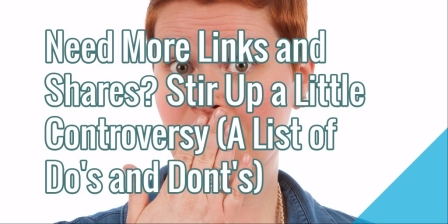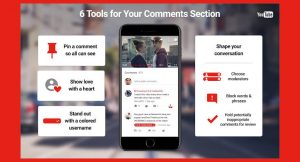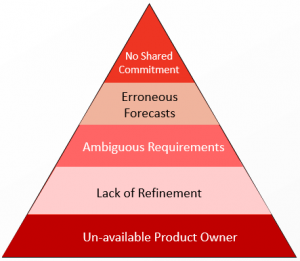
If you’ve been in the content marketing game for a while, you know an unfortunate reality: Not every campaign will be a viral hit. For every “Most Interesting Man in the World,” there is another idea out there that will likely dwindle into obscurity. However, every flop brings you that much closer to understanding what makes something shareable – helping you improve your chances of generating that next big win.
There are many different paths that lead to hundreds of links and millions of shares, and although many would argue that this kind of virality simply isn’t in your control, one way to improve your odds is to take the road less traveled and produce something controversial.
Polarizing content works because it triggers an emotional response – a key ingredient behind every viral hit. When people are emotionally invested in your content, it prompts them to share due an innate desire to voice their personal opinion; people click, read, and share because they have something to say about your content – and they want to make sure the internet knows.
Remember, though, that controversial content doesn’t come without its risks. Below are six do’s and don’ts to keep in mind in order to generate the awareness you want without stepping over the line.
Let’s Begin With The Do’s:
Use A Familiar Data Source
In order to mitigate any backlash from publishers and readers, your campaign should rely on a credible and trustworthy data source. A great example is “Hotel Hygiene Exposed,” which set out to determine the dirtiest hotels. A few members of my team at Fractl went on their own to nine different hotels in order to gather 36 samples from various surfaces. However, considering we lack degrees in microbiology, we tested the specimens through a third-party lab – boosting the campaign’s credibility.
The result? More than 700 pickups and 24,000 social shares.
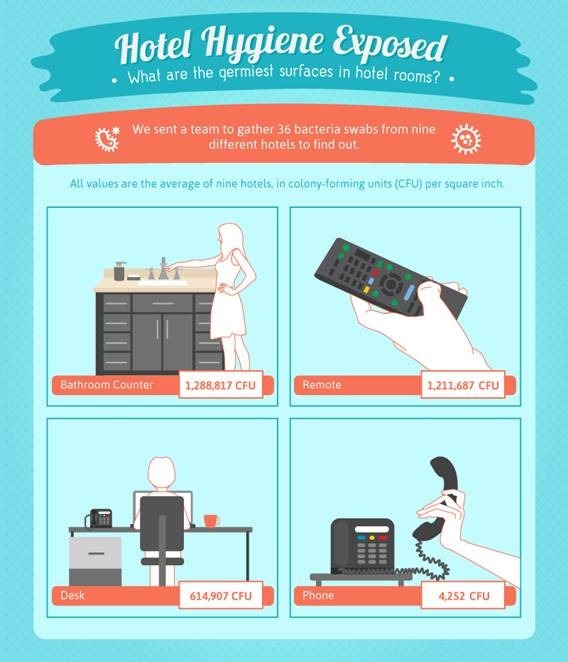
Offer A Unique Perspective
Another thing successful controversial content does well? It offers a different look at a familiar subject.
Who could forget the Ad Council’s incredibly moving “Love Has No Labels” clip. The organization’s mission is to “produce, distribute and promote campaigns that improve everyday lives,” and this ad was a home run in how it promoted tolerance through acceptance by taking an interesting look at each other’s differences.
The idea was quite simple: Using an X-ray machine, passersby saw different sets of skeletons showing different signs of affection to one another before revealing themselves as either gay, lesbian, or biracial – forcing viewers to rethink any unconscious biases they might have and appreciate that love is love no matter who is involved.
The result? More than 57 million views on YouTube alone, and the clip also boasts the title of the second most-viewed community and activism campaign of all time.
Connect Your Content With Your Brand’s Services
Keep in mind that stirring the pot simply to shock won’t generate the results you’re looking for if you don’t tie the campaign back to your brand in some way – specifically by providing value to your target audience.
A great example is “America’s Most P.C. and Prejudice Places.” Produced for ABODO – a site dedicated to visitors finding their next apartment – the campaign examines something that is often overlooked during the search for some place new to live: What are the social and cultural values of an area’s citizens? This campaign helped answer this question, revealing the most bigoted states and cities across the country.
The risky idea paid off, helping the brand earn more than 620 placements – including mentions on top-tier sites like CNET, Slate, Business Insider, Yahoo, Mic, Adweek – and over 67,000 social shares.
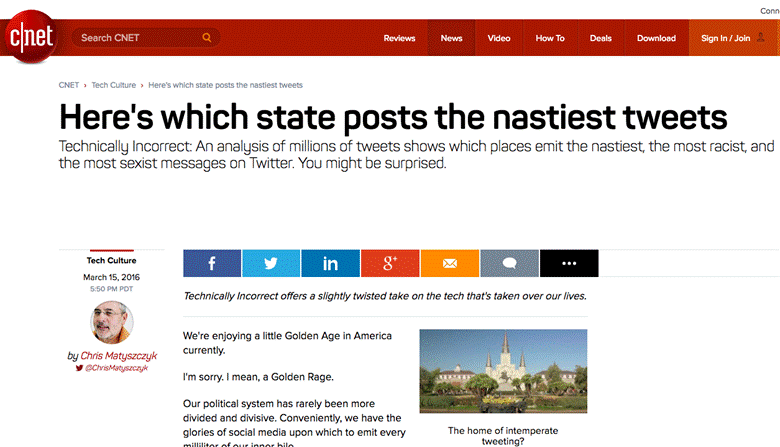
And Now The Dont’s:
Do Not Suggest Predatory Behavior
Regardless of your industry, releasing a message that implies it’s OK to engage in nonconsensual behavior is an immediate red flag – and someone in Bloomingdale’s quality assurance channel somehow missed a red flag in their 2015 holiday catalog.
The layout in question depicted a man gazing at a woman who is blissfully unaware, and the two were separated by a caption that read, “Spike your best friend’s eggnog when they’re not looking.” Sketchy, right?
Needless to say, the internet had a field day, which resulted in the retailer apologizing and acknowledging that the ad was in poor taste.
Do Not Incorporate Overly Offensive Imagery
Although polarizing content should easily resonate with its target market, it shouldn’t alienate other groups entirely either – particularly through any sort of bigotry.
Last November, Amazon decided to promote it’s original series The Man in the High Castle – a show used to explore an alternate reality in which Nazi Germany and Japan have divided control over the United States after winning World War Two – by plastering Nazi-inspired imagery across a shuttle in the New York City subway system.
Unsurprisingly, commuters were livid, and Amazon pulled the ads almost immediately.
Do Not Come Across As Having A Hidden Agenda
Remember that audiences are also quick to spot biases – specifically content that seems to do more for the brand than the viewers. To keep your campaign from being too one-sided, you shouldn’t come across like you have an ulterior motive.
McDonald’s, for instance, crossed the line in it’s “Carry On” TV spot. Audiences felt like the commercial was propaganda, trying to parade itself as an exemplary model of corporate kindness when most people believed otherwise.
A controversial campaign is a great way to generate big results so long as you keep these do’s and dont’s in mind. As these examples prove, brands in just about any industry can find success in a polarizing idea – just be extra mindful to create an error-free, respectful campaign since you’ll be dealing with a sensitive topic that will likely be viewed with more scrutiny than anything else on the web.
* Adapted lead image: Public Domain, pixabay.com via getstencil.com
Need More Links and Shares? Stir Up a Little Controversy (A List of Do’s and Dont’s)
The post Need More Links and Shares? Stir Up a Little Controversy (A List of Do’s and Dont’s) appeared first on Search Engine People Blog.
(85)
